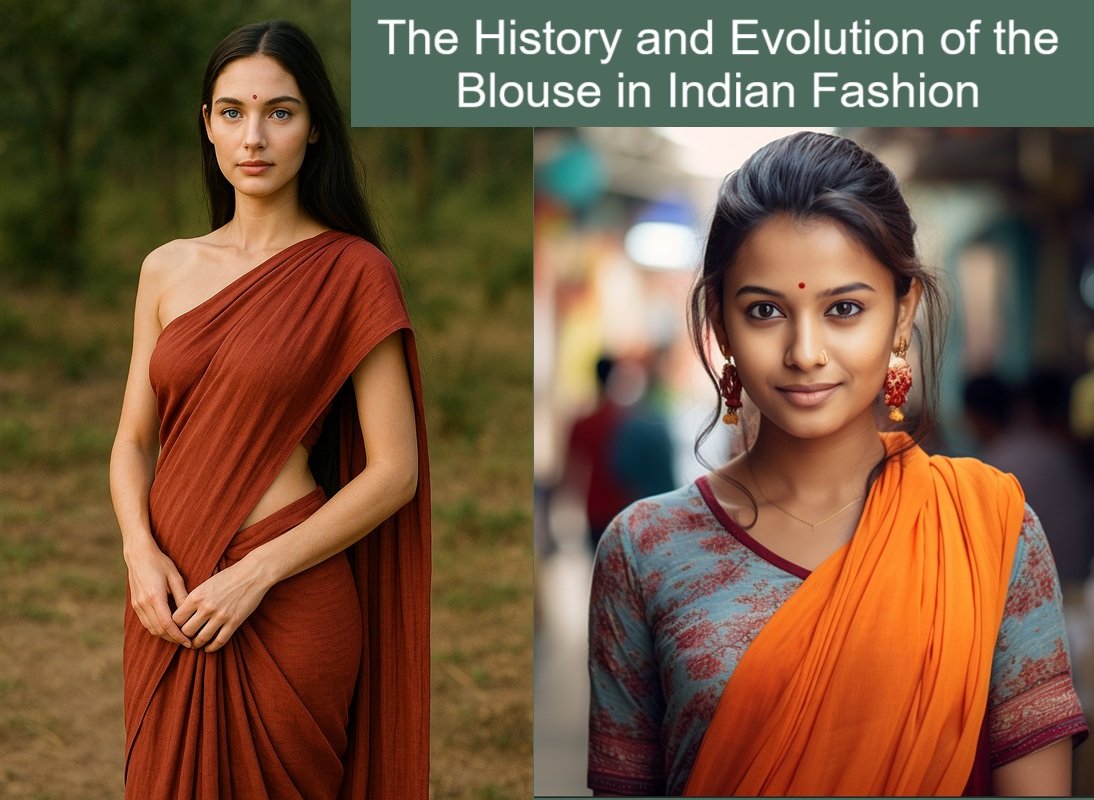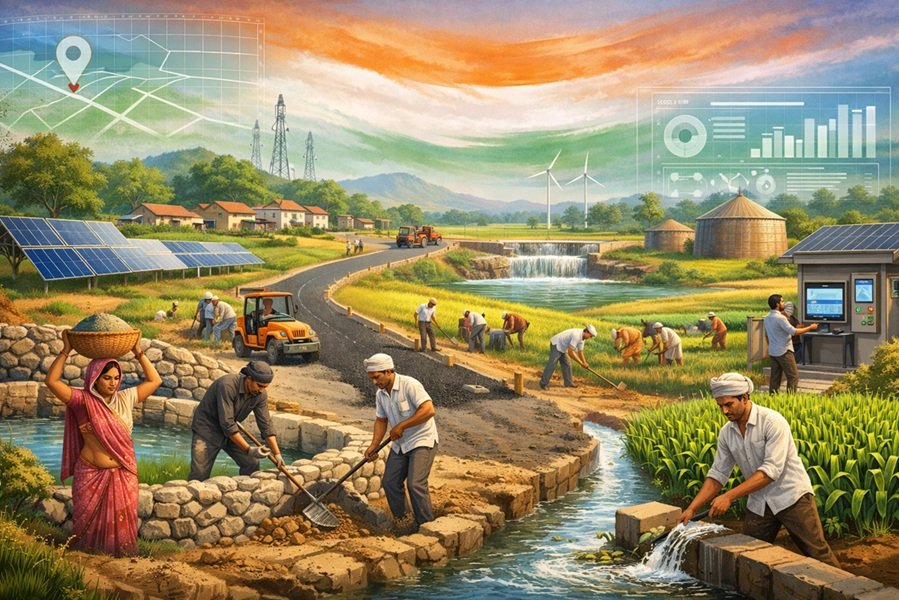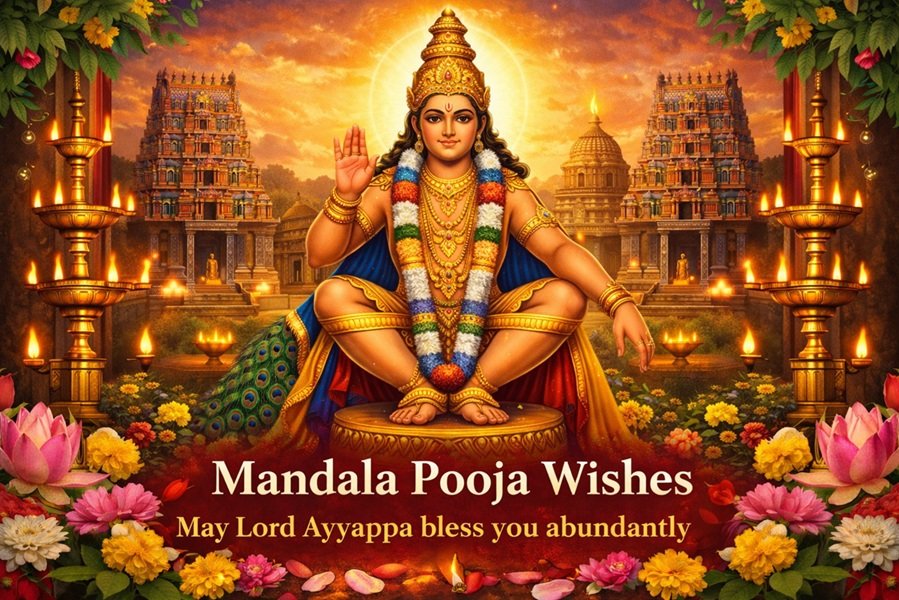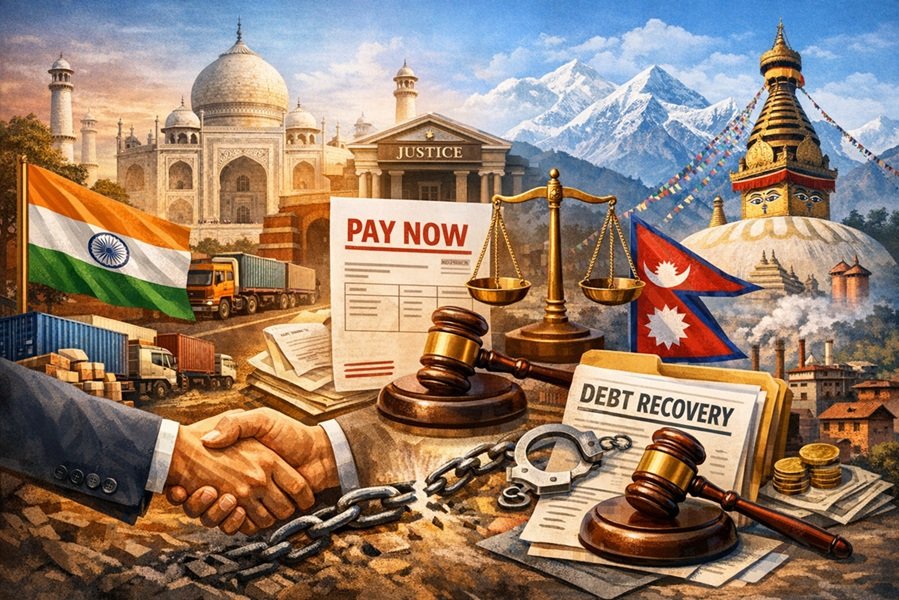
The blouse, an essential companion to the sari in contemporary Indian attire, has a history that is as layered and nuanced as the fabric of Indian civilization itself. While today it might seem like an inseparable part of a woman’s wardrobe in South Asia, especially in India, the blouse’s journey from non-existence to ubiquity tells a story shaped by cultural traditions, colonial influence, and evolving fashion sensibilities.
Ancient Indian Attire: The Era of Unstitched Drapes
In ancient India, especially during the Vedic and early classical periods, clothing was primarily composed of unstitched garments. Women traditionally draped themselves in garments like the antariya (a lower garment), the uttariya (a piece of cloth worn over the shoulders or head), and the sari, which was a long piece of cloth elegantly wrapped around the body.
Crucially, there was no concept of a blouse as a stitched upper garment. Women often left the upper body bare or covered it with another layer of cloth. This style was not seen as immodest but was in tune with the climate, aesthetic sensibilities, and cultural norms of the time. Artwork, sculptures, and ancient literature often depict women in draped clothing without any blouse, especially in regions like Tamil Nadu, Kerala, and Bengal.

The Arrival of the Blouse: Colonial Influence and Changing Norms
The stitched blouse emerged prominently during the British colonial period, not as a natural progression of Indian attire but as a response to Victorian ideals of modesty. The British administration, missionaries, and Western-educated elites often viewed traditional Indian styles—especially those that involved bare upper bodies—as inappropriate by European standards.
As women from elite and middle-class families began to interact more with colonial institutions (schools, courts, social gatherings), they faced pressure to adhere to Western dress codes. This led to the introduction of stitched upper garments, which later evolved into what we now recognize as the blouse.
Jnanadanandini Devi: The Pioneer of the Modern Blouse
One of the most influential figures in this transformation was Jnanadanandini Devi, a member of the Tagore family in 19th-century Bengal. She faced social restrictions when attempting to attend a British social event because she wore a sari without a blouse or petticoat, in the traditional Bengali style.
Determined to challenge the norms while adapting to colonial expectations, Jnanadanandini Devi designed a new form of sari ensemble that included:
- A blouse (stitched upper garment)
- A petticoat (underskirt)
- A modernized draping style
This innovation not only allowed her to participate in colonial society but also sparked a fashion revolution among the Bengali elite. Her design soon spread to other regions and became a trend.
Regional Resistance and Gradual Acceptance
Despite its growing popularity among urban and elite women, the blouse was not immediately accepted in all parts of India. In many rural and tribal communities, women continued wearing saris or regional drapes without a blouse well into the 20th century. In Kerala, Tamil Nadu, Odisha, and parts of the Northeast, many women—especially from marginalized communities—resisted or were denied the right to wear upper garments due to caste and social hierarchies.
Notably, the Channar Revolt in Kerala during the 19th century was a landmark movement where lower-caste women fought for the right to cover their upper bodies, a privilege previously reserved for upper-caste women. The struggle highlighted how the blouse became more than just a garment—it symbolized social dignity and equality.
Blouse as a Fashion Statement
As India moved into the 20th century and especially after independence, the blouse transformed from a symbol of modesty to one of fashion and self-expression. Tailors and designers began experimenting with cuts, fabrics, sleeve lengths, necklines, embroidery, and embellishments.
Today, blouses come in countless styles:
- Backless or halter blouses for glamour
- High-necked and elbow-length blouses for tradition
- Designer blouses with mirror work, sequins, or hand-painted art
- Blouses inspired by regional weaves like Banarasi, Kanjeevaram, or Ikat
The blouse is now a canvas of creativity, offering modern Indian women the ability to mix tradition with individuality.
The Cultural Significance Today
Even in the present day, the blouse holds deep cultural, regional, and personal significance. It is not merely an accessory to the sari or lehenga, but a statement of identity. For many women, the blouse connects them with their cultural heritage. For others, it’s an opportunity to redefine what tradition means in a globalized world.
From its absence in ancient wardrobes to its rise as a powerful symbol of modesty, resistance, and fashion, the story of the blouse is a reflection of India’s journey through time. It tells us how a simple piece of clothing can embody a civilization’s transformation across centuries.
Conclusion
The blouse in Indian fashion is more than just stitched fabric. It is woven with stories—of adaptation to colonial rule, of resistance against caste discrimination, of empowerment, and of fashion revolutions. Understanding its evolution not only enhances our appreciation of Indian textiles and fashion but also gives insight into the socio-political fabric that shaped modern India.
Would you wear a sari without a blouse today? Probably not—but just a few centuries ago, that was the norm. And tomorrow? Who knows what statement the blouse will make next.







